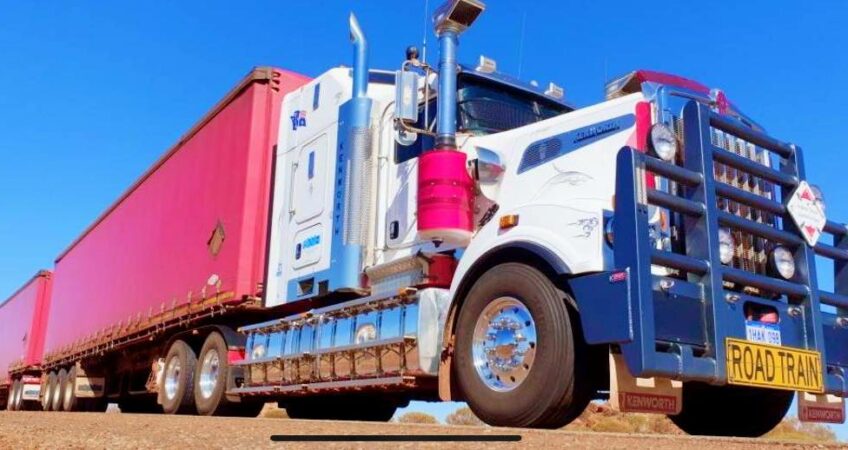
Transporting dangerous goods safely includes extensive planning and preparation, proper storage, managing licenses, segregating materials, and more.
Without the right measures, transporting dangerous goods can be harmful to the environment, harmful to public health and safety, or even fatal.
In our guide to transporting dangerous goods in Australia, we’ll cover:
- What are dangerous goods?
- What are the classes of dangerous goods?
- Examples of common dangerous goods
- Risks of transporting dangerous goods
- Requirements for transporting dangerous goods in WA
- Tips for transporting dangerous goods safely
- The importance of working with a freight partner with dangerous goods licensing
What Are Dangerous Goods?
The Department of Mines, Industry Regulation and Safety defines dangerous goods as items “where because of their physical, chemical or acute toxicity properties, present an immediate hazard to people, property or the environment.”
Substances that are flammable, toxic, oxidising, water-reactive, at risk of spontaneous combustion, or corrosive are considered dangerous goods. People are often surprised that everyday substances in Australia, such as pool chemicals or petrol cans are considered dangerous goods.
What Items Count as Dangerous/Hazardous Goods?
Classes of Dangerous Goods
Be aware of these nine classes of dangerous goods in Australia:
- Class 1 Dangerous Goods: Explosives
- Class 2 Dangerous Goods: Gasses; Compressed, Liquified, or Dissolved under pressure, such as acetylene, most aerosols, helium, oxygen, poisonous gases, chlorine, etc.
- Class 3 Dangerous Goods: Flammable Liquids
- Class 4 Dangerous Goods: Flammable Solids, substances liable to spontaneous combustion, substances that may emit flammable gasses
- Class 5 Dangerous Goods: Oxidizing Agents and Organic Peroxides, i.e. ammonium dichromate, ethyl methyl ketone peroxide, etc.
- Class 6 Dangerous Goods: Toxic & Infectious Substances such as cyanides, arsenic compounds, lead acetate, vaccines, pathology specimens, and more
- Class 7 Dangerous Goods: Radioactive Materials
- Class 8 Dangerous Goods: Corrosive Substances & Articles — Acids, bases/alkalis, hydrochloric acid, sodium hydroxide, batteries containing acid, etc.
- Class 9 Dangerous Goods: Miscellaneous Dangerous Goods such as environmentally hazardous substances, asbestos, dry ice. Etc.
Examples of Dangerous Goods
Dangerous goods can be gasses, solids, liquid, or bulk.
Examples of some commonly used dangerous goods in Australia include:
- Flammable liquids, such as acetone or petrol
- Corrosive substances, such as hydrochloric acid
- Explosives, such as ammunition or fireworks
- Gasses, including both flammable gasses (LPG and aerosols) and non-flammable gasses (such as helium or nitrogen)
- Toxic gasses, such as ammonia or nitric acid
- Aerosols such as insect bombs, spray paints, hairsprays, etc.
- LP gas
- Flammable solids and substances, such as carbon or calcium dithionite
- Goods that become dangerous when wet, such as calcium carbide
- Oxidising substances or organic peroxides, such as swimming pool chlorine
- Pesticides
- Acids
- Paints
- Cyanides
- Dry ice
Risks for Transporting Dangerous Goods
Hazardous goods can be deadly when stored or transported improperly.
Risks of transporting dangerous goods include:
- Environmental damage from chemical spills
- Explosions or fires
- Harmful dust or vapour accumulating in enclosed vehicles
- Chemical reactions
- Chemical burns
- Public health and safety concerns
- Gas cylinders venting with rising temperatures
- Chemical fumes, explosions, or fires as a result of vibrations, pressure changes, static electricity, or temperature changes during transport
- Packages becoming airbourne or sliding around as the vehicle brakes, accelerates, or corners
- Chemical reactions if a package breaks open or spills onto other packages
Requirements for Transporting Dangerous Goods
Transporting dangerous goods is allowed in Australia but only with the appropriate preparations, shipping, handling, labelling, and storage.
Here are the crucial requirements for transporting dangerous goods in Australia:
Segregate Dangerous Goods Appropriately
One of the most important steps in dangerous goods transportation is segregation. It is crucial to prevent reactive dangerous goods from coming into contact with each other. Incompatible classes of dangerous goods that are allowed to mix can lead to the release of toxic vapours or explosions.
Know Safe Storage Temperatures
Some goods must be stored below a certain temperature to prevent dangerous reactions. Learn the safe temperatures to store your materials here:
Safe Work Australia’s Safety Data Sheets for Hazardous Chemicals and Goods.
Know the Flash Points of Flammable Goods
A flash point is the temperature at which the vapours in a flammable liquid will ignite. If you are transporting flammable goods, know their flash points to prevent explosions or fires.
Label Dangerous Goods Correctly
Most Australian states require dangerous goods to be labeled as hazardous materials. Label all hazardous chemicals in line with the Globally Harmonised System (GHS).
If you pay attention as you drive around WA, you’ll see trucks and trains labelled with special placards that indicate dangerous goods. These labels adhere to strict guidelines under WA’s Dangerous Goods Safety legislation.
Offload Carefully
Keep the offloading area clear of workers, people, and obstacles. Minimise vehicular traffic near the offloading area.
Document the Transportation Correctly
Always keep accurate transport documents on hand when hauling dangerous goods. Transport documents must feature the description of the dangerous goods, the name of the consignor, and the phone number of the consignor. Check your state’s regulations to be sure you have the appropriate transportation documentation.
Research Your Route
Some states have no-go transport zones that prohibit the transportation of dangerous goods. Plan your transportation routes accordingly.
How to Transport Dangerous Goods Safely
Here are additional steps to keep in mind for how to transport dangerous goods safely:
- Follow all instructions as advised by The Department of Mines, Industry Regulation and Safety regarding transporting dangerous goods
- Hire a freight partner with a Dangerous Goods License
- Never mix dangerous goods as they could react if they are not separated
- Know and follow dangerous good temperature and storage guidelines
The Importance of a Freight Partner With a Dangerous Goods License
Transporting dangerous goods requires extensive preparation, knowledge, and proper storage of materials. If you have dangerous goods to transport, consider handing over the worry and stress to a freight partner with a dangerous goods license.
At Australia Wide Haulage, we specialise in safely transporting an extensive range of materials and heavy equipment. Our protocols and policies exceed best practices in the industry, making us the number one choice for numerous industries throughout the state and country.
If you would like a quote, get in touch with our team.
